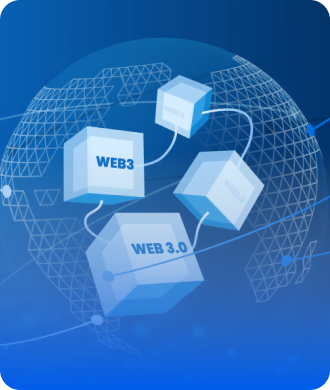
The world of non-fungible tokens (NFTs) has witnessed an incredible surge in popularity, revolutionizing the way we perceive and trade digital assets. However, the lack of standardized protocols posed several challenges, hindering the seamless integration and widespread adoption of NFTs.
Enter ERC-6551, a groundbreaking advancement in NFT standards that has the potential to reshape the NFT landscape. In this article, we’ll delve into the need for NFT standards, the evolution from ERC-721 to ERC-6551, and how it improves NFTs. So, let’s explore the exciting possibilities that lie ahead!
Evolution from ERC-721 to ERC-6551:
To understand the significance of ERC-6551, let’s first acknowledge the impact of ERC-721.
This previous NFT standard laid the foundation for the market’s initial growth, allowing the tokenization of unique digital assets like art, collectibles, and in-game items. However, ERC-721 had its limitations.
This is where ERC-6551 steps in, building upon its predecessor’s success. ERC-6551 turns any NFT into a Web3 wallet, enabling it to hold other tokens. This breakthrough empowers artists, creators, and collectors with more opportunities and enhances the functionality of NFTs like never before.
Why do We Need NFT Standards?
NFTs, despite their immense potential, faced obstacles due to the absence of standardized protocols. Without proper standards, interoperability, security, and scalability became major concerns. However, ERC-6551 addresses these issues head-on.
By establishing uniform guidelines, it promotes confidence and trust among users and investors, facilitating the smooth transfer and interaction of NFTs across different platforms and ecosystems. This standardization fuels innovation, attracting more participants and expanding the NFT market’s horizons.
What Makes ERC-6551 Different?
ERC-6551 introduces a paradigm shift in the NFT space. It treats NFTs as Web3 wallets, enabling them to hold various tokens. This concept revolutionizes the way we perceive NFTs, expanding their utility beyond mere digital assets.
Just like a real-life wallet can hold identity information, currencies, and personal artifacts, a Web3 wallet-NFT can serve as a gateway to diverse activities and interactions within the blockchain realm. It unlocks a new realm of possibilities for NFT owners, allowing them to engage in token swaps, yield farming, and other DeFi applications directly through their NFTs.

Limitations and Challenges:
While ERC-6551 brings forth remarkable advancements, it’s important to acknowledge the potential limitations and challenges. Let’s discuss some;
- Scalability concerns: Integrating multiple tokens within an NFT using ERC-6551 may increase the computational load and result in higher gas fees, potentially limiting its adoption and usage.
- Compatibility issues: Ensuring compatibility across different platforms, wallets, and smart contracts can be a challenge when implementing ERC-6551, as it requires collaboration and standardization among various stakeholders.
- User adoption: Educating users about the benefits and functionalities of ERC-6551 and encouraging them to embrace the standard may pose a challenge, as it requires a shift in understanding and behavior.
- Security considerations: Introducing additional tokens within NFTs may introduce new security vulnerabilities, requiring robust auditing and testing procedures to ensure the integrity and safety of token-bound accounts.
- Ongoing development: As ERC-6551 is a relatively new standard, it is subject to ongoing development and refinement. Continued efforts are required to optimize and enhance the standard based on community feedback and emerging use cases.
By acknowledging and actively addressing these limitations and challenges, the community can work towards maximizing the potential of ERC-6551 while mitigating any potential drawbacks.
Diverse Applications of ERC-6551
The applications of ERC-6551 extend far beyond the realms of art and collectibles. Industries such as gaming, virtual real estate, and digital identities can benefit immensely from this standard. Imagine acquiring an NFT that grants you access to exclusive in-game items or owning a digital passport that authenticates your online identity securely. ERC-6551 opens up a world of possibilities for innovative use cases that go beyond the traditional notion of NFTs.
Let’s explore some of the diverse applications made possible by ERC-6551:
- Art: ERC-6551 enables artists to embed unlockable content, virtual experiences, or even membership privileges within their NFTs. By attaching additional tokens to their artwork, artists can create dynamic and evolving pieces that offer unique and exclusive experiences to collectors. This adds a new layer of interactivity and value to the world of digital art.
- Gaming: The gaming industry is no stranger to NFTs, and with ERC-6551, the integration of in-game assets becomes even more seamless. Players can own NFTs representing virtual items, characters, or even in-game currencies. These NFTs can be token-bound accounts that hold various tokens, allowing for interoperability between different games and platforms. This enables a new level of ownership and transferability of in-game assets, creating a vibrant secondary market.
- Collectibles: ERC-6551 empowers collectors by allowing them to curate diversified portfolios within a single NFT. Collectibles can be enhanced with additional tokens, representing ownership of related items, access to exclusive events, or even voting rights within a community. This opens up new possibilities for collectors to build comprehensive collections and interact with their favorite communities.
- Identity Verification: ERC-6551 has the potential to revolutionize identity verification processes. By associating identity-related tokens with an NFT, individuals can prove their identity in a decentralized manner. This could have far-reaching implications, such as simplifying user onboarding processes for various platforms and reducing reliance on centralized identity verification systems.
- Decentralized Finance (DeFi): The integration of ERC-6551 with DeFi applications holds significant potential. NFTs can act as collateral within DeFi protocols, enabling users to unlock liquidity by tokenizing their assets. Additionally, token-bound accounts within NFTs can hold different tokens associated with lending and borrowing, yield farming, and other DeFi activities. This expands the utility of NFTs beyond digital collectibles, opening up a new dimension of financial possibilities.
Predictions for the Future of NFTs with the Adoption of ERC-6551:
With the advent of ERC-6551, the future of NFTs appears even more promising. The integration of NFTs as Web3 wallets paves the way for seamless experiences in digital ownership. Imagine your favorite CryptoKitty not only being a digital collectible but also holding other tokens, participating in decentralized exchanges, or even generating passive income. This convergence of NFTs and the broader blockchain ecosystem amplifies the potential for monetization, creativity, and interconnectivity. We can anticipate NFTs evolving into dynamic and multifunctional assets, captivating new audiences and expanding their use cases across industries.
Conclusion:
ERC-6551 has emerged as a game-changer in the world of NFTs, providing a standardized framework that empowers artists, creators, and collectors with unprecedented opportunities. By turning NFTs into Web3 wallets and enabling the holding of additional tokens, ERC-6551 expands the utility and functionality of NFTs, unlocking new realms of creativity and value. As we embrace this evolution, we can look forward to an exciting future where NFTs seamlessly integrate into our digital lives, creating endless possibilities for the entire ecosystem.



